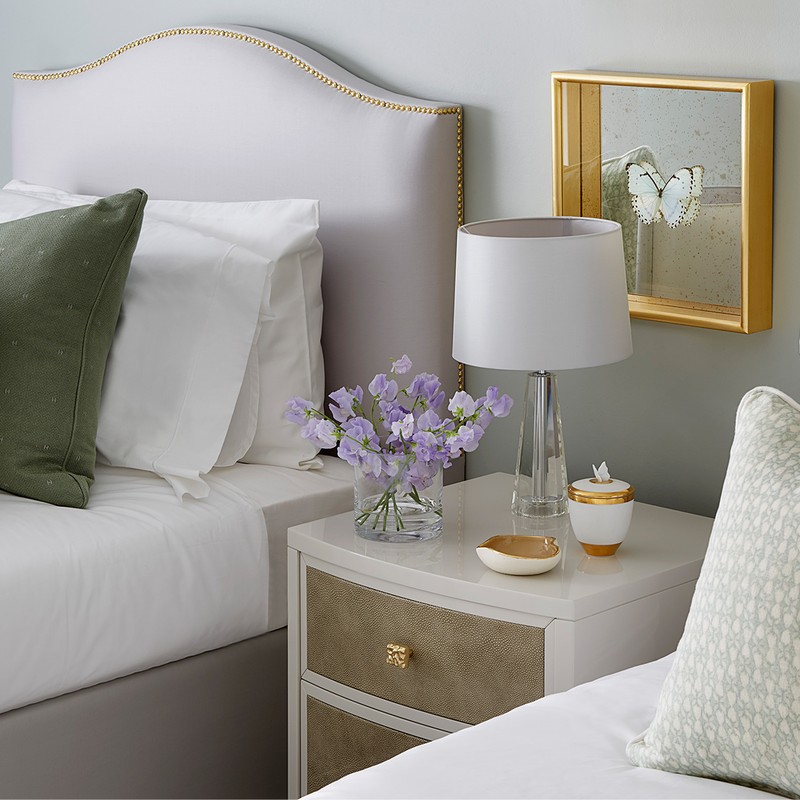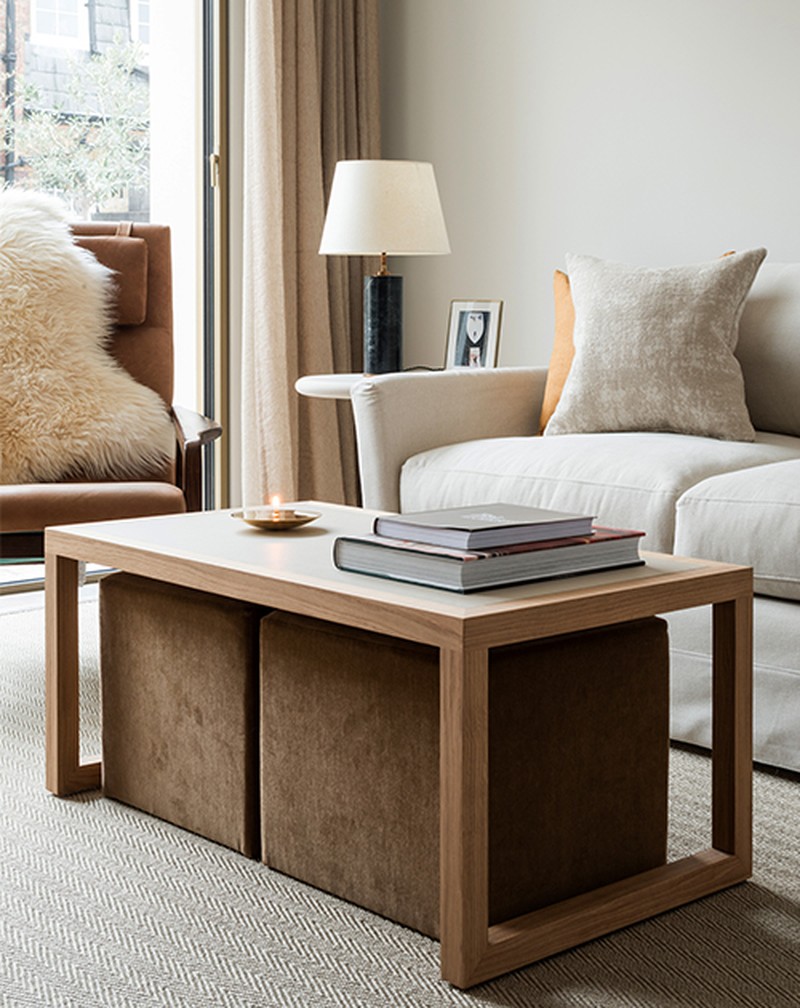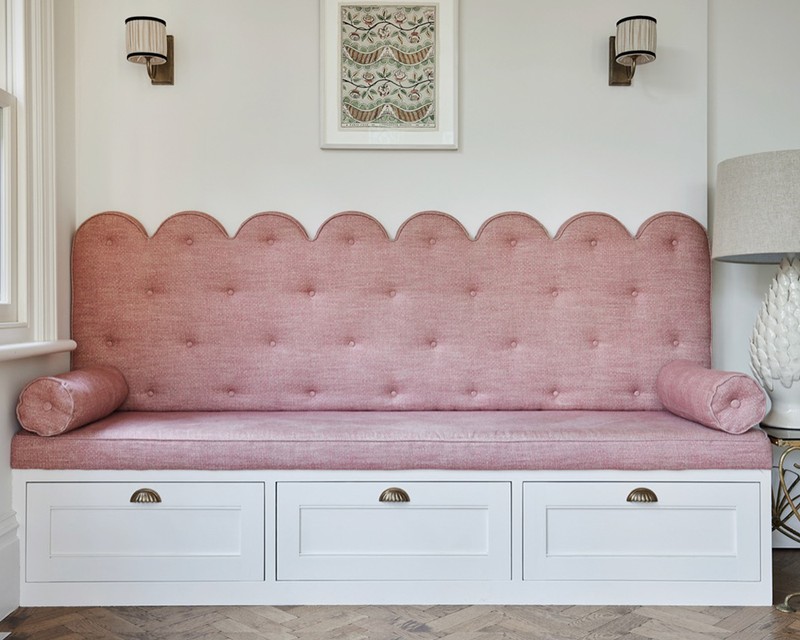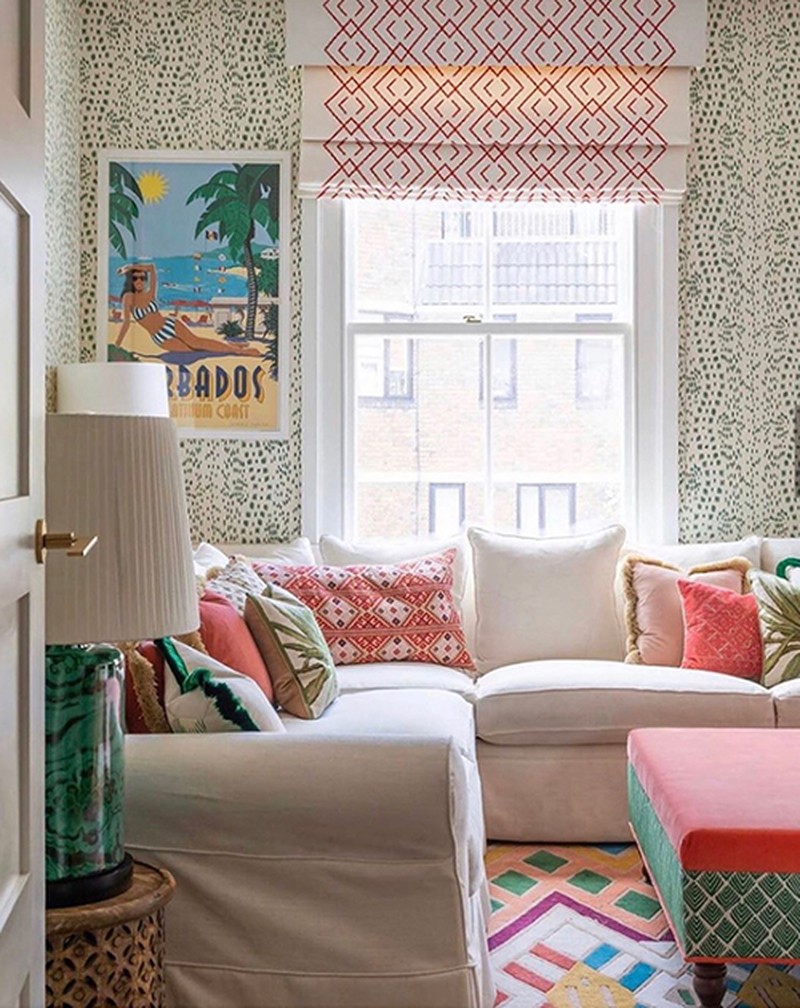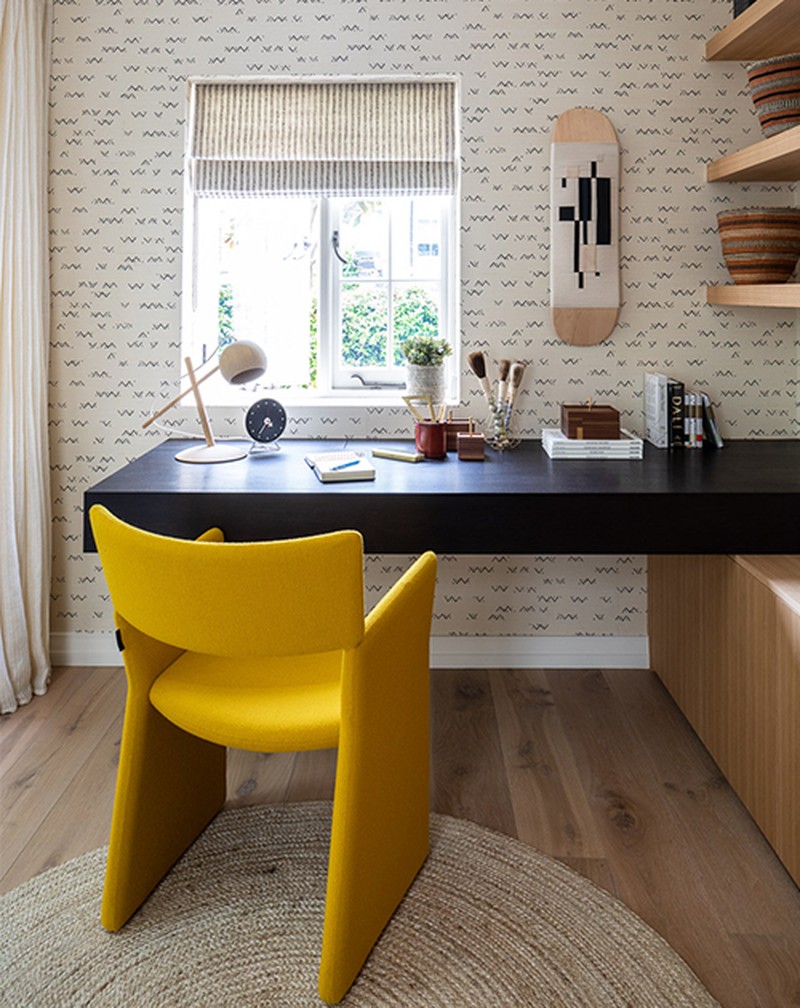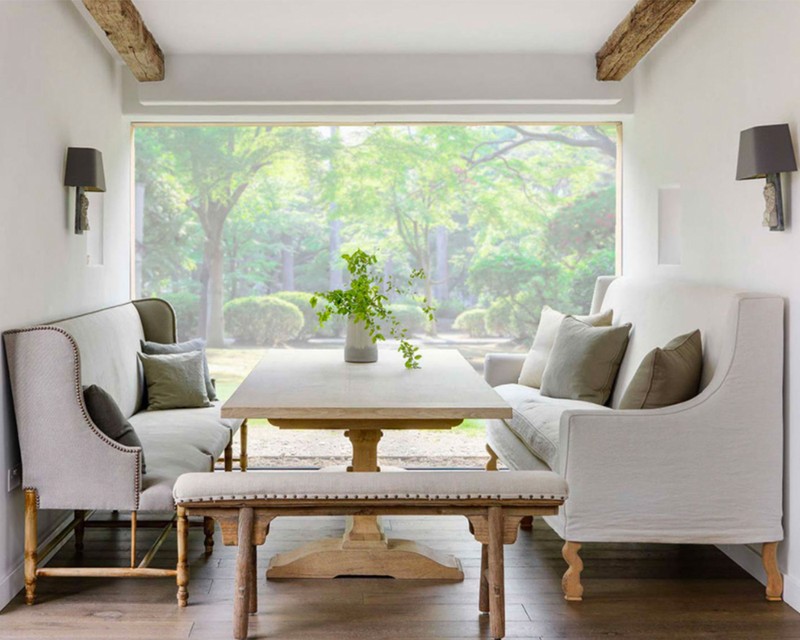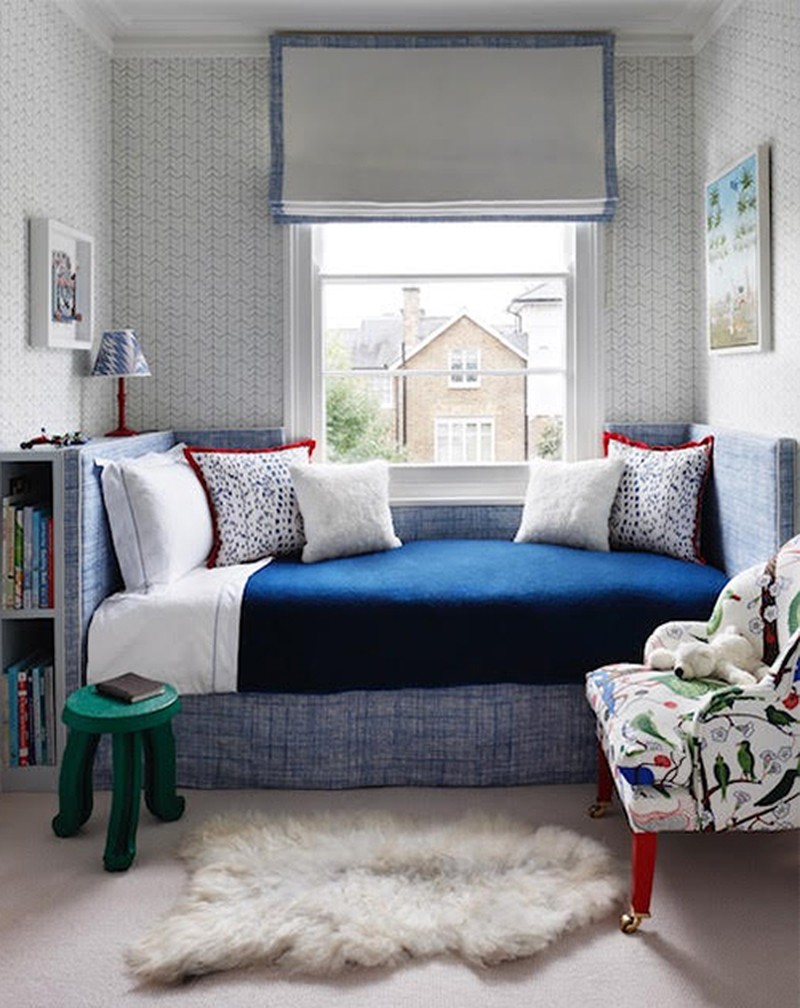22 Tips To Successfully Decorate Small Rooms
A well designed small room can offer comfort and cosiness, as well as the chance to express your creativity. But when working within tight parameters, every element needs to be meticulously planned. Designer Sarah Peake explains: “I love small spaces because it forces you to be creative – and the transformation can be startling, especially when you can make clever use of limited space. They also lend themselves well to becoming cocoon-like nests, whether that is a luxurious single guest bedroom, a fun child’s bedroom or study.”
WALLS
“People often paint small rooms in neutral colours to make them appear larger, but it’s challenging to make a small room anything more than that in reality, so be bold and give it some character.” – Somya Singh, senior designer at Echlin Design Studio
“Painting a small room a proper colour will help to give it a purpose. Feature walls in small rooms can be jarring, so go for a single tone which isn’t too dark.” – Camilla Clarke, creative director at Albion Nord
“To bring a small space to life, go for the element of surprise. Things like a bold, colourful and patterned wallpaper with an oversized mirror can give a small space a sense of drama, as well as trick you into thinking the room is bigger than it is. If you go for dark walls, just remember to paint your ceiling dark too.” – Sarah Peake, founder of Studio Peake
“Repaint timber architraves, doors and skirting a bright white or light grey for a quick change – nothing lifts a dated, dark interior faster. Also, consider adding polished plaster to the walls instead of paint or wallpaper; it has a soft reflective quality, which maximises natural light and makes ceilings feel higher. It’s particularly effective in narrow hallways.” – Katharine Pooley, founder of Katharine Pooley
FLOORING
“Fully fit the carpet instead of using a rug, as they can make spaces look smaller. A properly fitted carpet will draw the eye to all the edges of the room, giving the illusion of more square footage.” – Camilla
“Keep it simple and complimentary to the rest of the building, and don’t suddenly introduce new textures, as this can confuse the overall flow.” – Emma Deterding, founder of Kelling Designs
LIGHTING
“Omitting a pendant light is a mistake in small spaces – people often worry they need a lot of room to use one. This is not the case and the right pendant will actually make a space seem larger by drawing the eye upwards. Crystal pendants will give you so much more light than down lights, so consider an art deco style with ribbed glass for a sleek architectural look. Glass lamps also add beauty and form without feeling bulky – go as large as possible for maximum light.” – Katharine
“It’s always more atmospheric to have decorative lights like a pendant and wall lights rather than just down lights. If you are tight on ceiling height, use a flush mount pendant. Wall lights are also great for guest bathrooms because they give a lovely warm glow, which is really flattering. With wall lights you can have fun with little shades – Rosi de Ruig does some wonderful marble paper ones. If you don’t have space for wall lights either side of a mirror, consider popping one above it.” – Sarah
WINDOW TREATMENTS
“Try to make the curtain treatment as interesting as possible – frame the windows and add a decorative pelmet or trim to help them become a feature within the space.” – Camilla
“In a smaller bedroom, a Roman blind in a chic fabric is a better fit than trying to squeeze a large pair of curtains in. Change out your curtain poles to be a light metal like polished nickel and remove all heavy pelmets or swags – clean lines are best. Plain fabrics on curtains are preferable in a small space, and consider a leading edge trim if you want a personal touch.” – Katharine
“If areas are small, don’t fill them up with big curtains. Go for a more tailored look, such as smart Roman blinds with pelmets to add interest and raise the eye.” – Emma
MIRRORS
“Adding a large mirror, or better still, a pair of mirrors, will lift the space and make it seem much bigger. Mirror panelling in a bathroom automatically makes it feel much larger, too. Recessed diffused strip lighting behind vanity mirrors and below bath panels can also be really effective.” – Katharine
“Use lots of mirrors if you can, the longer and taller the better, as they will also increase the volume and size of the room. Use a full wall mirror if you need to really enhance the light and space.” – Emma
JOINERY
“We recently designed a child’s bedroom and managed to squeeze in all sorts of things: the bed went under the window and we popped a bookcase behind the headboard. This meant the top of the bookcase doubled up as a bedside table.” – Sarah
“You have to be clever when planning the space. In a small cloakroom, tricks like using a loo with the cistern hidden behind panelling and a removable shelf keeps the space neat, while also creating useful storage. If there’s space under the sink, that’s useful too, but you should try to embrace all the nooks and niches. Make awkward corners a point of interest by adding open shelving and filling it with books and accessories.” – Camilla
FURNITURE
“If you live in a small space, second hand and vintage furniture is often more delicate and comes in smaller proportions than modern pieces. It also adds far more character.” – Somya
“Some designers say to make the furniture as big as possible, but first and foremost it should always be sensible – use one or two pieces rather than trying to ram it full, and use symmetry as best you can so everything is gentle on the eye.” – Emma
“Don't be afraid to use unusual pieces – a bedside table doesn't always have to be a bedside table, for example. If you are compromised on space, use something interesting and unexpected as an alternative.” – Camilla
“In a small room, a glass or mirror top coffee table can create a more spacious feel. Go for sculptural linear pieces that add interest without blocking any sight lines.” – Katharine
DECORATION
“In small spaces, use block colours on sofas and chairs, perhaps with a co-ordinating piping before introducing more colour and pattern into the cushions.” – Emma
“Change out your throws and cushions for lighter colours – dove grey, ivory and soft blues all work well for a serene, airy feel. In bedrooms, swap the bedding for a crisp bright white. Also, consider white silk lampshades and a pair of mirrors either side of the bed to create a spacious feeling. Think about changing any heavy and dark artwork for something lighter, too; you may love it but the wrong piece can make a small space feel tiny. Consider adding one large statement artwork instead of lots of smaller items, and have any existing artwork reframed in fresh frames and mounts – a silver or moon gold gilt tray frame is ideal. White, metallic and crystal accessories will also draw the eye, while a mixture of organic shapes and finishes like shells, coral, mother of pearl and shagreen, combined with crystal and metallic accents, add tactile interest without cluttering up a space.” – Katharine
DISCLAIMER: We endeavour to always credit the correct original source of every image we use. If you think a credit may be incorrect, please contact us at info@sheerluxe.com.
